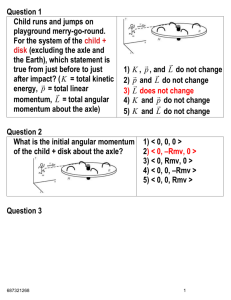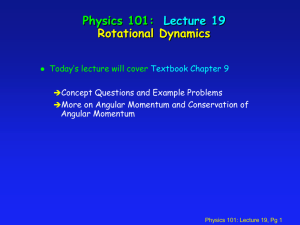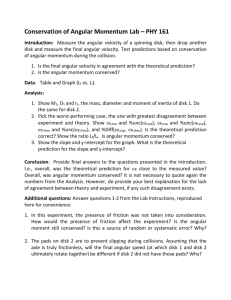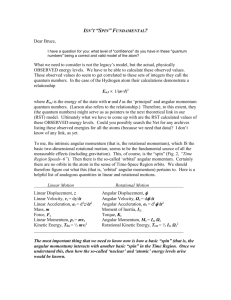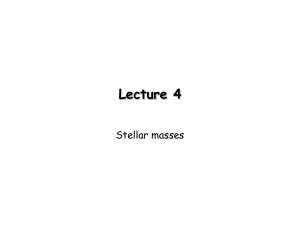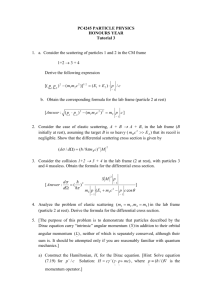Pre-Lab for Energy and Momentum Conservation
advertisement
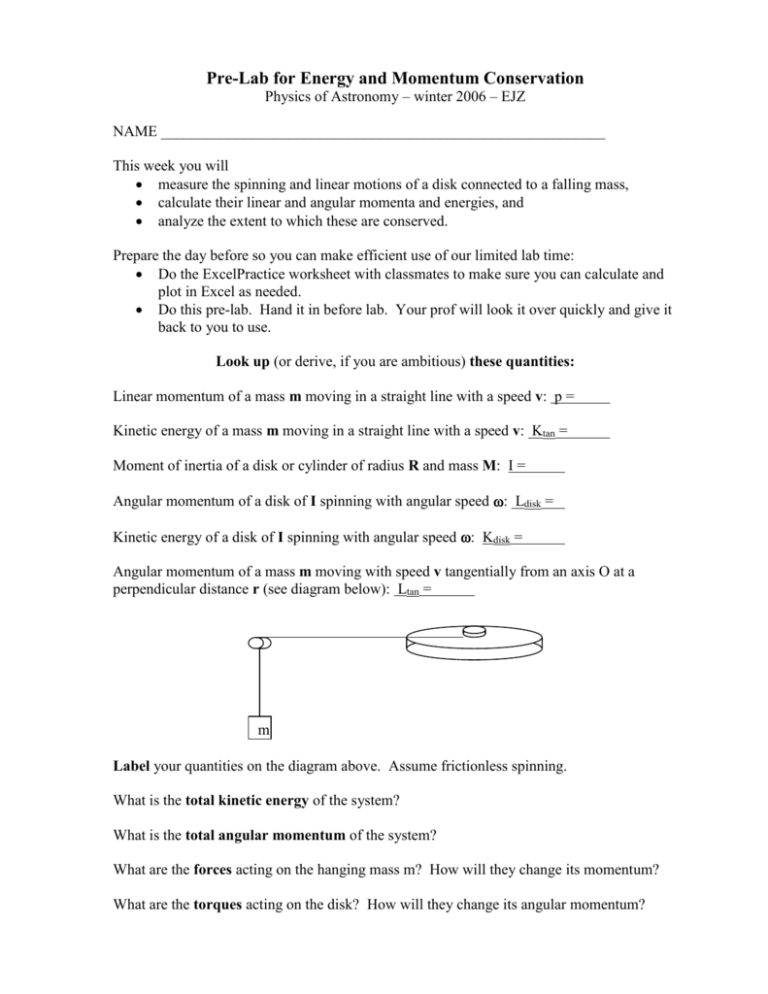
Pre-Lab for Energy and Momentum Conservation Physics of Astronomy – winter 2006 – EJZ NAME ___________________________________________________________ This week you will measure the spinning and linear motions of a disk connected to a falling mass, calculate their linear and angular momenta and energies, and analyze the extent to which these are conserved. Prepare the day before so you can make efficient use of our limited lab time: Do the ExcelPractice worksheet with classmates to make sure you can calculate and plot in Excel as needed. Do this pre-lab. Hand it in before lab. Your prof will look it over quickly and give it back to you to use. Look up (or derive, if you are ambitious) these quantities: Linear momentum of a mass m moving in a straight line with a speed v: p = Kinetic energy of a mass m moving in a straight line with a speed v: Ktan = Moment of inertia of a disk or cylinder of radius R and mass M: I = Angular momentum of a disk of I spinning with angular speed : Ldisk = Kinetic energy of a disk of I spinning with angular speed : Kdisk = Angular momentum of a mass m moving with speed v tangentially from an axis O at a perpendicular distance r (see diagram below): Ltan = m Label your quantities on the diagram above. Assume frictionless spinning. What is the total kinetic energy of the system? What is the total angular momentum of the system? What are the forces acting on the hanging mass m? How will they change its momentum? What are the torques acting on the disk? How will they change its angular momentum? Lab writeup – recommended format Purpose (to investigate conservation of energy, momentum, and angular momentum) Questions (How can we measure changing energies and momenta in a dynamic experiment?) (To what extent are energies and momenta conserved in our experiment?) Method (describe the experiment and your procedures) Data (raw data, clearly labeled, with appropriate units and uncertainties) Calculations (energies and momenta) Results (discussion of calculations, and plots with axes, units, and labels) Discussion (use your data and results to address your questions) Doing your lab Take detailed notes in your lab book. Write on only the right page. Leave the left page blank for afterthoughts. Use pen. Never obliterate, erase or black out your work, because you may find your original work useful. Instead, cross out with a thin line or simple X any work you suspect. Organize your notes in a format such as that recommended above. Include diagrams. Ask questions of your classmates, TA, and prof! Do not leave questions for later. Record secondary questions, hypotheses, and findings in your lab notebook. Your lab notebook should be readable by you as a running account or narrative of your investigation. Use words and sentences, not just numbers. Tell the story as you go. Afterwards, write up your lab formally and CONCISELY in Word. Include Excel pages of your calculation. Post your lab report this weekend on WebX.




